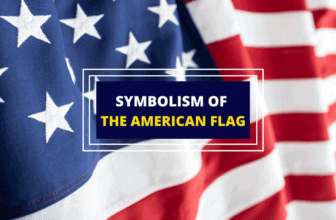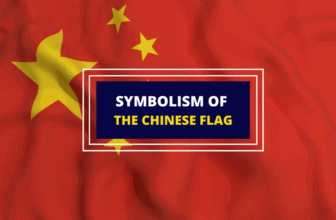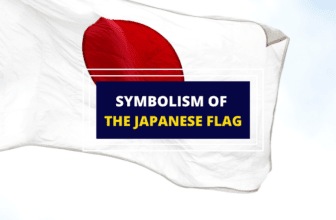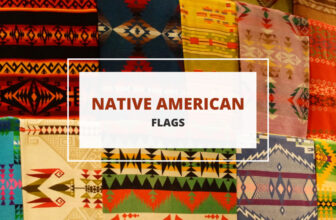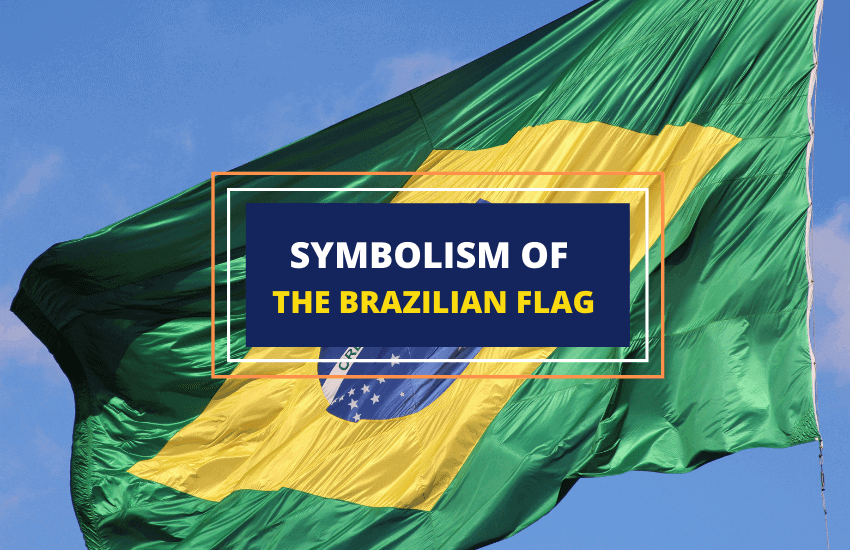
Table of Contents
You know it as the beautiful South American country nestled in between the Amazon rainforest and the blue waters of the Pacific Ocean. The Federative Republic of Brazil is a diverse country of more than 200 million people who predominantly speak Brazilian Portuguese. Still, there are hundreds of different languages spoken in the country.
This stunning country is one of the world’s few megadiverse countries with hundreds of ethnicities. Brazil is a country of immigrants, indigenous peoples, festivals, and colors. The sheer diversity that Brazil offers, from nature to people, is immense. What better way to understand what unifies all this than deconstructing the meaning and symbolism behind the Brazilian national flag?
The History of the Brazilian Flag
The earliest flags flying on the territory of Brazil were private maritime flags used by the ships that carried goods and slaves into Brazilian ports. When Brazil became a part of the kingdom of Portugal, the Portuguese flag was used in Brazil.
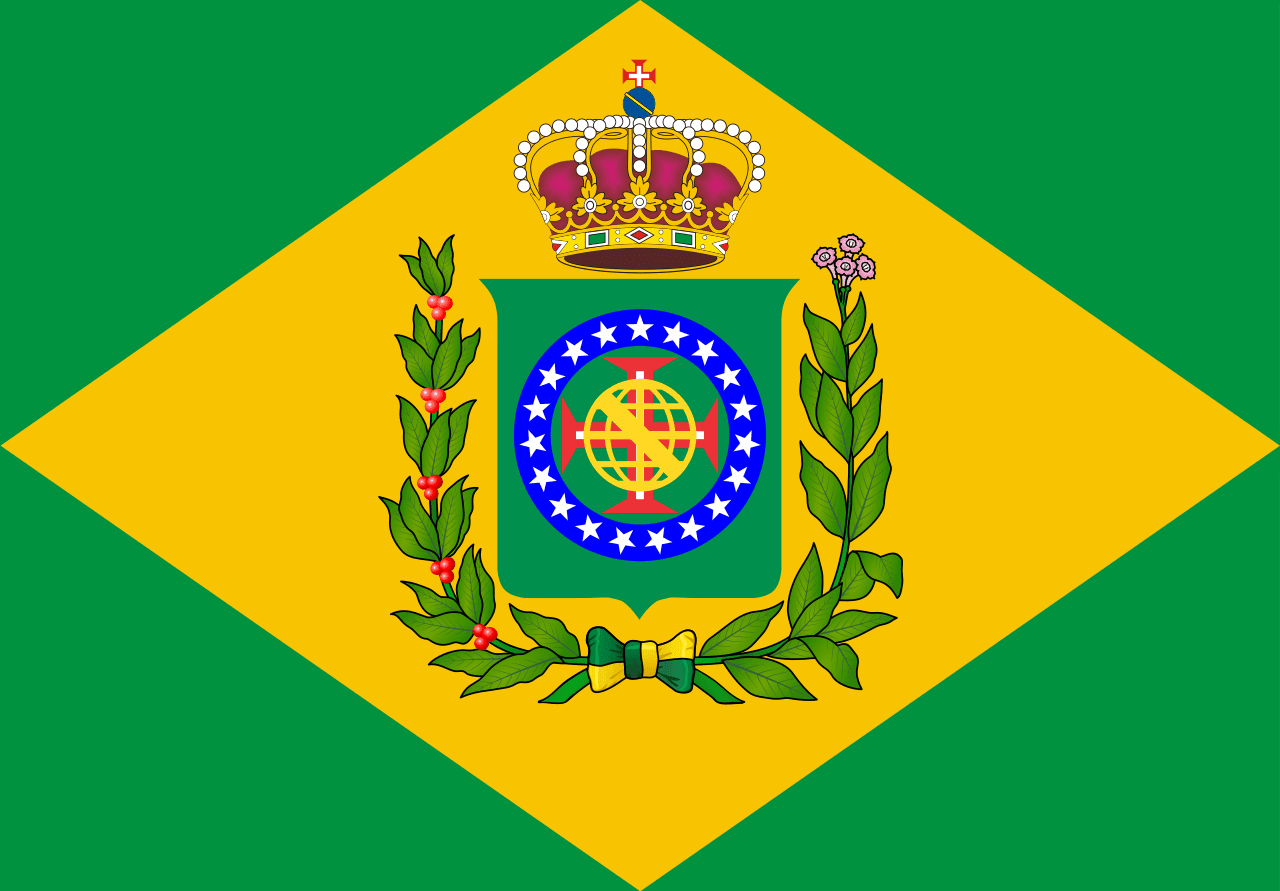
The first flag of Brazil was designed after Brazil became independent from Portugal in 1822. The flag, including the coat of arms in the center, was designed by the French painter Jean-Baptiste Debret, and the colors were chosen by Don Pedro I, the emperor of Brazil.
The green background represents the colors of the Braganza dynasty of Pedro I. The yellow background symbolizes the Habsburg dynasty, which came from Pedro’s union with Maria of Austria.
The Flag of Republican Brazil
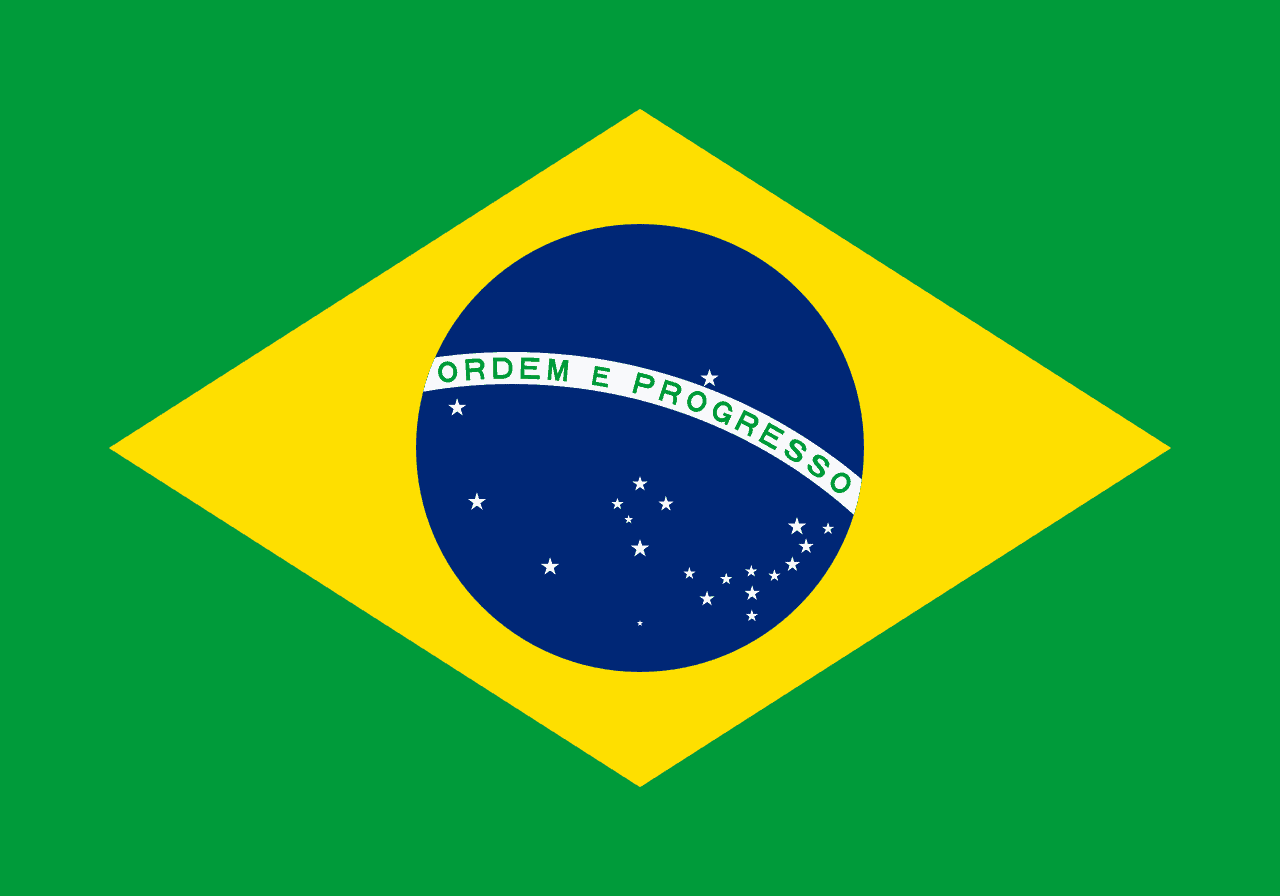
The next major change came a few years later, when the Republic of Brazil was proclaimed in 1889, succeeding the Empire of Brazil. This saw the end of the monarchy.
The colors of the flag remained unchanged, but several elements were removed. The most noteworthy change is the absence of the crown and the imperial coat of arms.
The new elements of the national flag of Brazil introduced a change in the dimensions of the yellow rhombus. A blue sphere was added in place of the coat of arms, symbolizing the sky, and white stars were added to the blue sphere, to represent the federal states of Brazil.
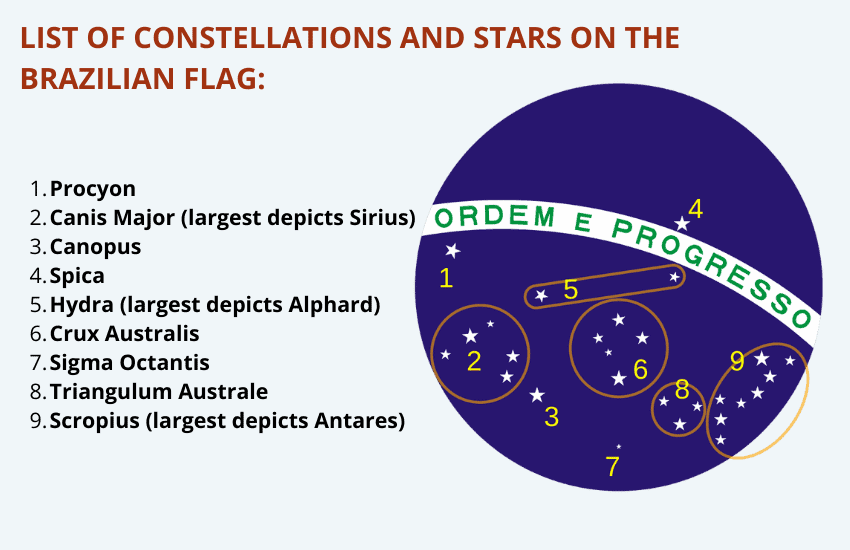
The flag creators drew the position of the stars on the new flag in such an order that they reflect their actual positions in the morning sky of November 15th, 1889, when the Republic was proclaimed. This means that by looking at the flag of Brazil, you are looking at history, noting how the skies looked when Brazilians looked to the heavens on that November day in 1889. The sky on the Brazilian flag is covered with 27 stars that symbolize the 27 federal states of Brazil. If you look closely, one of the stars, called Spica, is above the white band. This symbolizes Parana, the northernmost Brazilian territory in the northern hemisphere.
And finally, the motto was added to the flag.
The Motto – Ordem e Progresso
Loosely translated, these words mean “order and progress”. Historically, they were associated with the French philosopher August Comte. The latter famously highlighted the ideas of positivism and exclaimed the importance of love as the principle, order as the basis, and progress as the goal.
The words Ordem e Progresso struck a chord with Brazilians who felt disenfranchised with the Monarchy of Pedro I, and they ushered the new era of Brazilian republicanism.
The Brazilian Flag Symbolism

The current Brazilian flag features a green background, on which is superimposed a yellow rhombus with a blue circle at its center. The blue circle features a scattering of stars, representing the night sky, and a white stripe with the words of the national motto Ordem e Progresso (order and progress).
Brazil’s flag and its name are attributed to the Portuguese expression verde e amarela, which means “green and yellow.” Some Brazilians like to call the flag Auriverde, which means “gold-green”.
The name of the flag highlights its colors that have deep meaning to Brazilians.
- Green – The green background of the flag comes from the Coat of Arms of the House of Braganza. However, some Brazilians will tell you it represents the colors of the lush Amazon rainforest, and the flora and fauna of Brazil.
- Yellow – The yellow color is associated with the House of Habsburg. Emperor Pedro I married Maria of Austria, who came from the Habsburg dynasty. Some like to view the yellow as representing Brazil’s mineral riches and the wealth of the country.
- Blue – The blue circle represents the night sky, while the stars depict constellations in the southern hemisphere. This depiction shows how the night sky was seen on the night of November 15, 1889, when the country became free of Portuguese rule and became a republic. The stars also represent the number of states in Brazil, and as this number has changed over the years, the depiction of stars on the flag has also gone through some changes, much like the flag of the United States.
Wrapping Up
The Brazilian flag is something that reflects Brazilian creativity, societal complexity, and vast diversity. The flag has gone through several changes throughout the decades, and the contemporary Brazilian flag still reflects aspects of the old imperial Brazilian flag.




